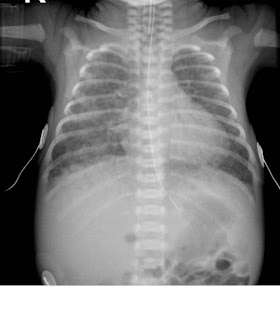 - The contrast enhanced CTs demonstrate low attenuation ascites around the liver and spleen due to extravasated urine.
- The contrast enhanced CTs demonstrate low attenuation ascites around the liver and spleen due to extravasated urine.-There is high attenuation contrast extravasation leaking from the bladder.
Bladder ruptures are usually classified as intraperitoneal versus extraperitoneal. An intraperitoneal rupture is caused by extreme pressure on a full bladder. The rupture occurs at the dome of the bladder, through the peritoneum, into the peritoneal cavity. An intraperitoneal rupture is more common in children because of the relative intra-abdominal position of the bladder. An extraperitoneal rupture is usually associated with fractures of the bony pelvis.
http://eradiology.bidmc.harvard.edu/Classics/item.aspx?section=Emergency+Radiology&labelpk=33f0adab-853f-4010-a0e2-0756b3f1eac5&pk=99d14e70-bf2d-4e79-be0d-599dc0ffd83d





















































